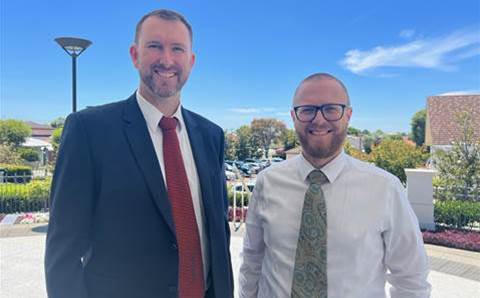The future of the web is headless

With today’s online demand growing at a record rate, our new The State of Headless Global Report reveals a growing enterprise focus on the importance of digital experiences, consistent content experiences and a strong belief that headless technology is the best way to deliver them.
The report explores the current state of headless adoption among enterprise organisations while highlighting why businesses are using headless to create engaging user experiences. In Australia, 66% of enterprise organisations are currently using a headless technology approach and a further one in five (21%) are considering adopting one within the next 12 months. For businesses that may not be so familiar with this growing technology, here’s what you need to know.
What is headless?
At its core, the term “headless” comes from the concept of chopping the “head” (the front end, i.e. the graphical user interface) off the “body” (the back end, i.e. where the code and data live). In this type of web architecture, the front end and back end work independently. The system for sending content, for instance, product information, consists of using an application programming interface (API) that can be connected to any channel, such as mobile apps, smartwatches, voice assistants or digital kiosk screens. On this front end, businesses are free to create a user interface, likely done by a developer, that can be tailored to each user, application, and screen.
While this may seem like an inconsequential separation of powers, headless architecture has seen rapid adoption among enterprise organisations in recent years because it allows for faster performance, represents a more modern development framework, is more easily customisable, and offers greater flexibility.
Why a headless approach?
Headless technologies are viewed as the most effective solution for delivering powerful digital experiences. The majority of respondents (89%) said implementing headless technologies makes it easier for organisations to deliver a consistent content experience – and 87% believe their business is ahead of competitors when delivering new digital experiences.
Interestingly, respondents gave nearly even weight to the benefits they looked to headless solutions for, including better overall performance/faster page load times (34%), faster time to market with digital experiences (31%) and the delivery of omnichannel experiences (29%).
Headless approaches offer an attractive opportunity for ROI by eliminating the need for re-platforming and allowing companies to keep their back end content management system (CMS) while APIs navigate the various digital touchpoints on the front end that unify the customer journey.
The end result of all these benefits is an agile web configuration that allows for the creation of superior digital experiences, including lightning-fast web and mobile pages, enhanced security benefits, and a consistent content experience across all channels, built with the tools and solutions developers and content creators prefer to use.
Delivering a wide range of digital experiences
While respondents identified eCommerce (46%), IoT (44%) and websites (42%) as the main digital experiences and outputs they hope to deliver with their current and future headless architecture, other projects, such as digital and voice assistants (42%) and virtual reality (42%), also enjoy an equal dose of interest. Because it’s already the most popular CMS in the world, used by many of the world’s largest sites, and because it’s highly compatible as a headless CMS, bringing flexibility, extensibility, and tons of features that content creators love, WordPress is a natural fit for headless configurations.
While the current state of headless is impressive, the future looks even brighter. Headless is on track to become the future of the web, but the organisations that will truly reap its benefits are those that implement it in a modern, flexible way, empowering their internal teams to build fast, dynamic, content-rich websites.
Mark Randall is VP of Sales APAC at WP Engine











